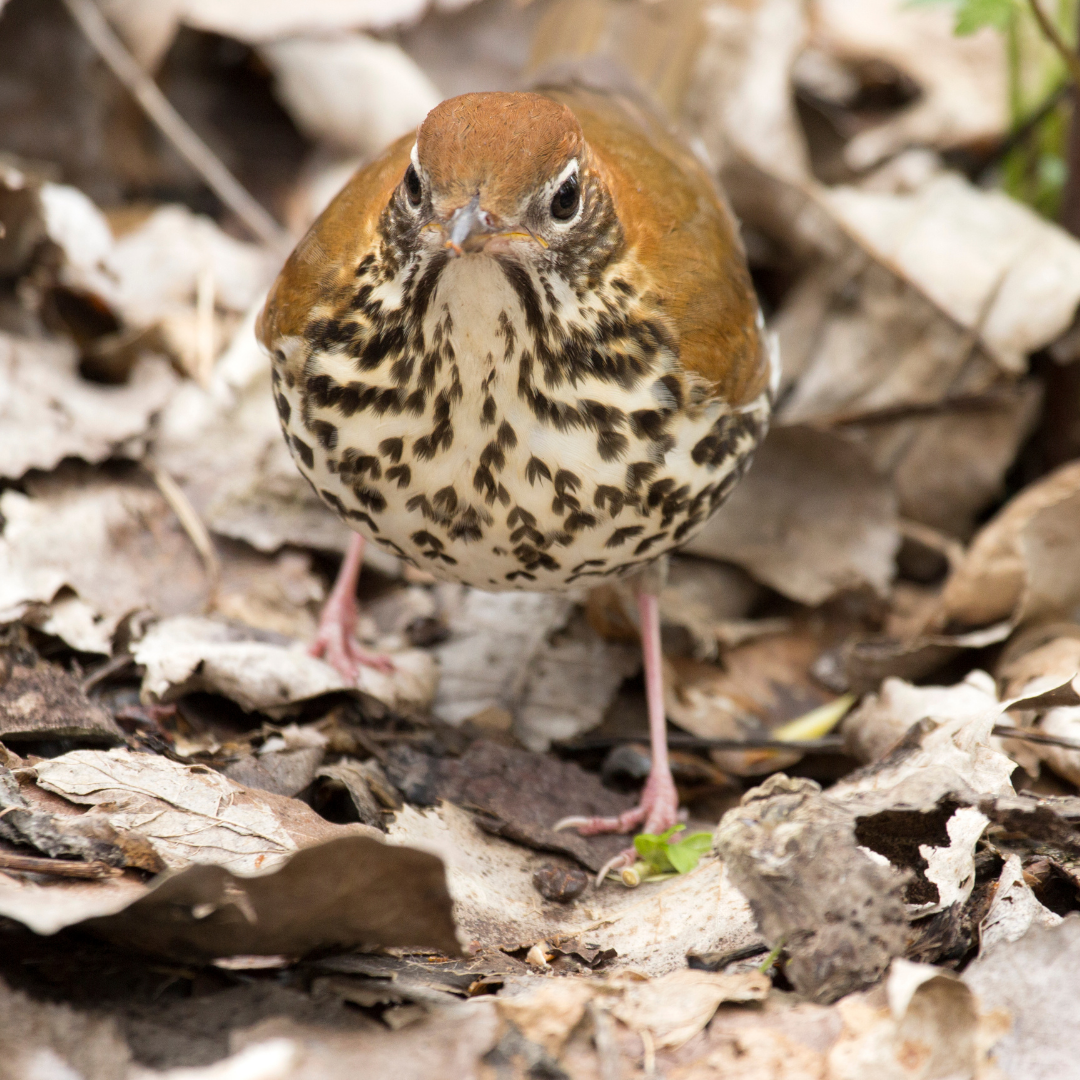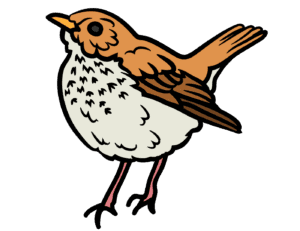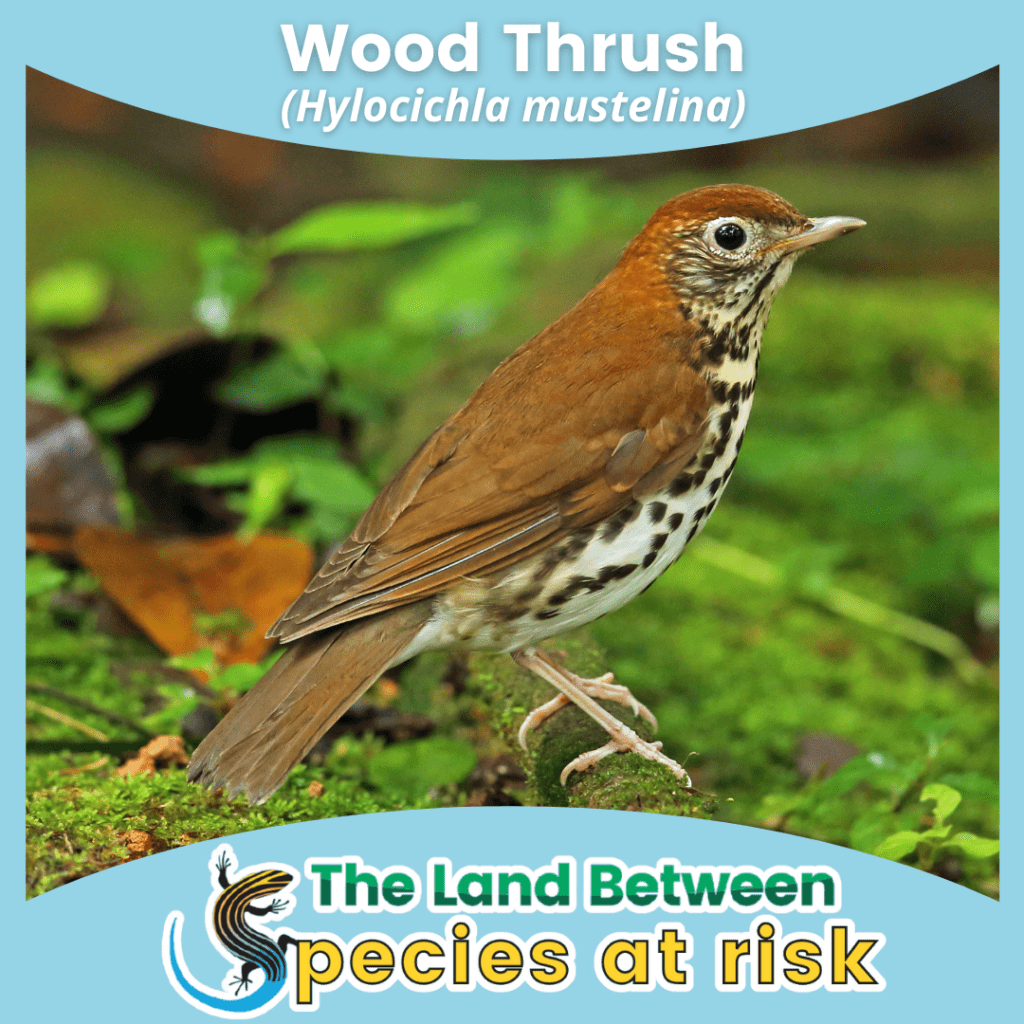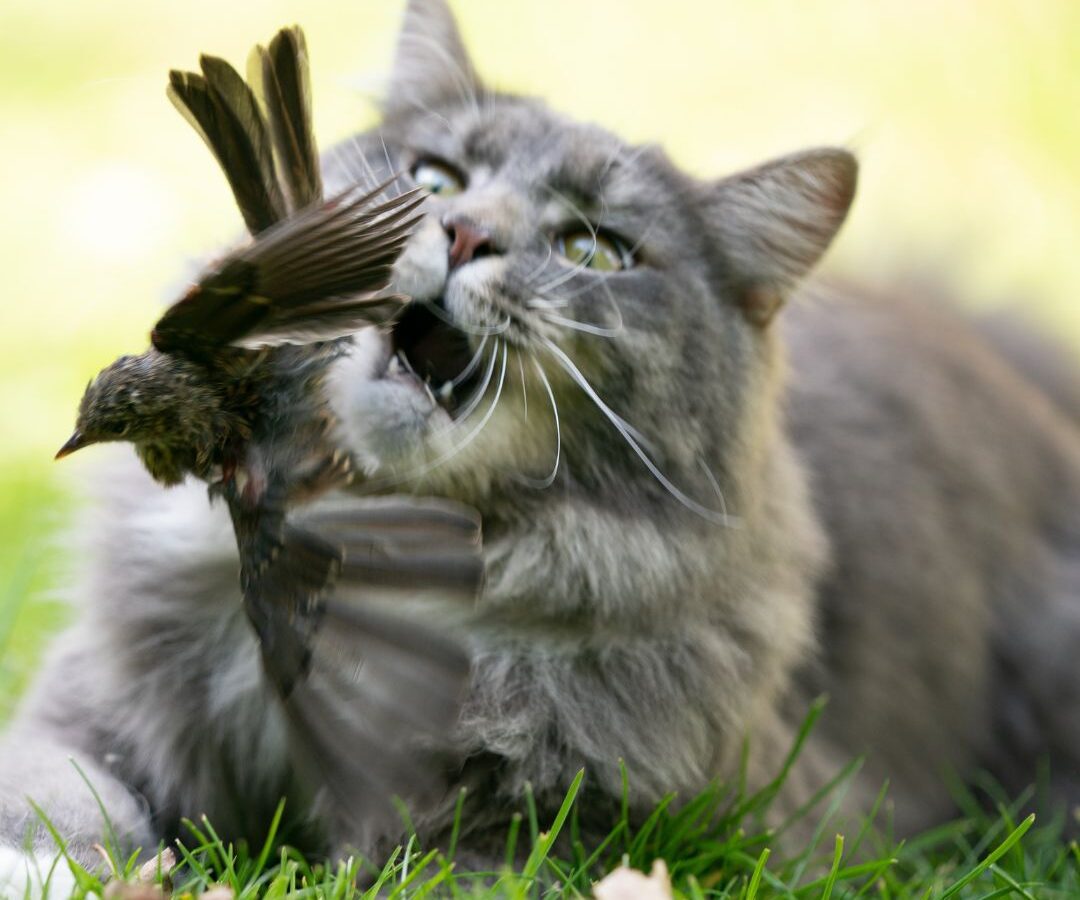
Species Identification:
The Wood Thrush is a medium-sized (20 cm) songbird slightly smaller than a robin, and with a similar shape. Their top feathers are light brown, and they have a white throat and belly with black spots. Adults have thin white eye rings, and male and females look similar. Juveniles have light spots on their upper feathers, but otherwise look similar to adults. The male Wood Thrush sings mainly at dawn and dusk, and has a flute-like song with two to six low-pitched “bub bub” notes followed by trills. Calls include sharp “pit pit pit” and low “quirt”.
Diet:
The Wood Thrush hops along the bare ground to forage on larval and adult insects, centipedes, millipedes, and isopods either from the forest floor or at the base of plants. They may also eat snails and salamanders. Adults have a more fruit-based diet during the winter and in preparation for migration. This includes blueberries, American Elderberries, Jack-in-the-pulpit, and Black Cherry. They will only feed under the protection of overhead vegetation.

Biology and Behaviour:
Adults arrive in Ontario mid-to late May, with males sometimes arriving a few days earlier. The female builds a nest in the fork of a tree or shrub, or on top of a stump. Preferred tree or shrub species for nest building include young Sugar Maple, American Beech, English Hawthorn, and Red-berried Elder (especially in Ontario). Cup nests are built out of grass, twigs, moss, bark, and mud. Males act aggressively to defend breeding sites from competing species such as the Hermit Thrush and Veery. The female lays an average of four eggs, and double broods are quite common. Eggs hatch after 12 days, and nestlings are fed by both parents for about two weeks. In Ontario, most Wood Thrushes begin their migration from mid-September to mid-October, but some will stay into November.
Predators include several raptor species, Crows, Jays, snakes, and small mammals such as raccoons, skunks, and foxes. During breeding season, roughly one third of Wood Thrush nests experience nest parasitism from Brown-headed Cowbirds. The Cowbird is a brood parasite, meaning they lay their eggs in the nests of other bird species to avoid parental duties. The host bird unknowingly feeds the Cowbird hatchling, which usually hatches first and thereby diverts resources away from the hosts own nestlings. Cowbirds will also remove or destroy one or more of the host bird’s eggs if given the opportunity.

Similar Species:
- There are other Thrush species that look similar to the Wood Thrush, but they do not have white eye rings or rust coloured sides and flanks
- The Ovenbird has the same colouring but they are smaller and more of a streaked appearance instead of spotted
- The Wood Thrasher (Toxostoma rufum) has dark streaks on their undersides and a longer tail than the Wood Thrush

Conservation and recovery strategies:
Most Wood Thrush habitat occurs on private land throughout North America, which is harder to protect. The Nature Conservancy of Canada has been working to secure continuous areas of deciduous forest habitat to protect essential breeding ground for the Wood Thrush, but mostly within the Carolinian zone of Ontario’s southwest. They also support research to track the Thrushes movements and migration to better understand how to protect their key territory. Few Wood Thrushes have breeding grounds on public lands, especially in eastern Ontario. So far, 10 national parks have reported sightings of the Wood Thrush, with only 3 of them reporting breeding populations. This makes it much more difficult to protect the Wood Thrush, and protection and rehabilitation of this species can only move forward if there is collaboration between governments, the public, and environmental groups.
Quick Facts:
- A big ice storm in 1998 damaged a large chunk of forests in Eastern Ontario, but it was actually very beneficial for the Wood Thrush. Forest patches were opened up, allowing a substantial understory to develop
- Researchers can track Wood Thrush movement by placing a radio-tag backpack on Thrushes as young as 10-day-old, which can then be detected by Motus towers
- Wood Thrush travel at a speed of 233-271 km per day during their two week migration
Additional Resources:
- Cornell Lab of Ornithology page
- NCC’s Wood Thrush page, and information on research projects
- Earth Rangers for kids: “All About the Wood Thrush”
- Animal Diversity Web Wood Thrush page
- COSEWIC 2012 Assessment and Status Report


Sources:
COSEWIC. 2012. COSEWIC assessment and status report on the Wood Thrush Hylocichla mustelina in Canada. Committee on the Status of Endangered Wildlife in Canada. Ottawa. ix + 46 pp. (www.registrelep-sararegistry.gc.ca/default_e.cfm).












